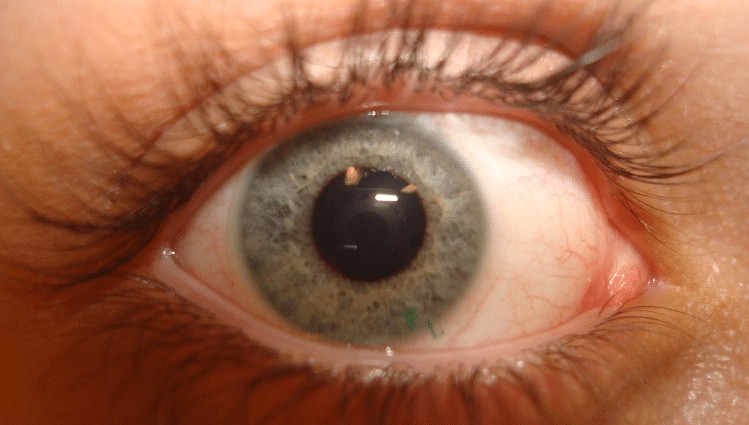
An outbreak of a rare eye infection that can cause blindness has been detected in eye contact wearers in south east England, a new study warned.
There has been a threefold increase in Acanthamoeba keratitis, a painful and swollen infection of the cornea, since 2011.
It is caused by the cyst-forming microorganism Acanthamoeba, which is common in nature and is usually found in bodies of water such as lakes, oceans and rivers, as well as domestic tap water, swimming pools, hot tubs, soil and air.
The bug is more commonly found in the UK than in other countries, likely due to higher levels found in domestic as opposed to mains water supplies, so that water contamination of contact lenses is of particular concern in the UK.
But the outbreak is preventable and contact lens wearers need to know the risk, the new study led by UCL and Moorfields Eye Hospital researchers warned.
Anyone can be infected, but contact lens users face the highest risk, due to a combination of increased susceptibility to infection, for reasons not fully established, as a result of contact lens wear and contamination of lens cases.
Reusable contact lens wearers with the eye infection are more likely to have used an ineffective contact lens solution, have contaminated their lenses with water or reported poor contact lens hygiene.
The infection needs immediate attention usually with antiseptic eye drops but hard to teat cases may also need antibiotics or steroids as well as painkillers.
In the most serious infections a corneal transplant may be needed.
Lead author Professor John Dart said: “This infection is still quite rare, usually affecting 2.5 in 100,000 contact lens users per year in South East England, but it’s largely preventable.
“This increase in cases highlights the need for contact lens users to be aware of the risks.”
Prof Dart at UCL’s Institute of Ophthalmology and Moorfields Eye Hospital NHS Foundation Trust said: “People who wear reusable contact lenses need to make sure they thoroughly wash and dry their hands before handling contact lenses, and avoid wearing them while swimming, face washing or bathing.
“Daily disposable lenses, which eliminate the need for contact lens cases or solutions, may be safer and we are currently analysing our data to establish the risk factors for these.”
The researchers collected incidence data from Moorfields Eye Hospital from 1985 to 2016.
They found an increase dating from 2000 to 2003, when there were eight to 10 cases per year, to between 36 to 65 annual cases in the past few years.
As Moorfields treats more than one in three cases of the disease in the UK so the researchers expect their findings are relevant to the UK more broadly.
The most severely affected patients who make up a quarter of the total have less than 25 per cent of vision or become blind following the disease and face prolonged treatment.
Overall 25 per cent of people affected require corneal transplants to treat the disease or restore vision.
The researchers also conducted a case-control study of people who wear reusable contact lenses on a daily basis, although the disease is also associated with disposable lenses.
It compared those who had a diagnosis of Acanthamoeba keratitis to those who had come in to Moorfields A&E for any other reason, from 2011 to 2014.
The case-control study included 63 people with Acanthamoeba keratitis and 213 without who completed questionnaires.
It found the risk of developing the disease was more than three times greater amongst people with poor contact lens hygiene, who did not always wash and dry their hands before handling their lenses, those who used a lens disinfectant product containing Oxipol (now phased out by the manufacturer), and for people who wore their contacts while in swimming pools or hot tubs.
Showering and face washing while wearing contact lenses are also likely to be risk factors.
Co-author Dr Nicole Carnt, who completed the study at Moorfields before moving to the University of New South Wales, said: “We now need to share this information as widely as possible with clinicians, contact lens practitioners and contact lens wearers, a strategy that has proved effective in the past in decreasing the incidence and burden of this severe eye infection.”
Irenie Ekkeshis, who is part of Acanthamoeba Keratitis Patient Support Group UK added: “This research confirms what those of us affected by Acanthamoeba keratitis have suspected for some time: that incidences of this awful, life-changing infection are on the increase, and there’s more that should be done to prevent people from losing their sight to Acanthamoeba keratitis
“It is absolutely imperative that regulators and those working in the optical sector take the findings seriously, and use the recommendations to take immediate and urgent action on prevention.
“Contact lenses are medical devices and should be supplied with warnings regarding safe use.”
The study was published in the British Journal of Ophthalmology.